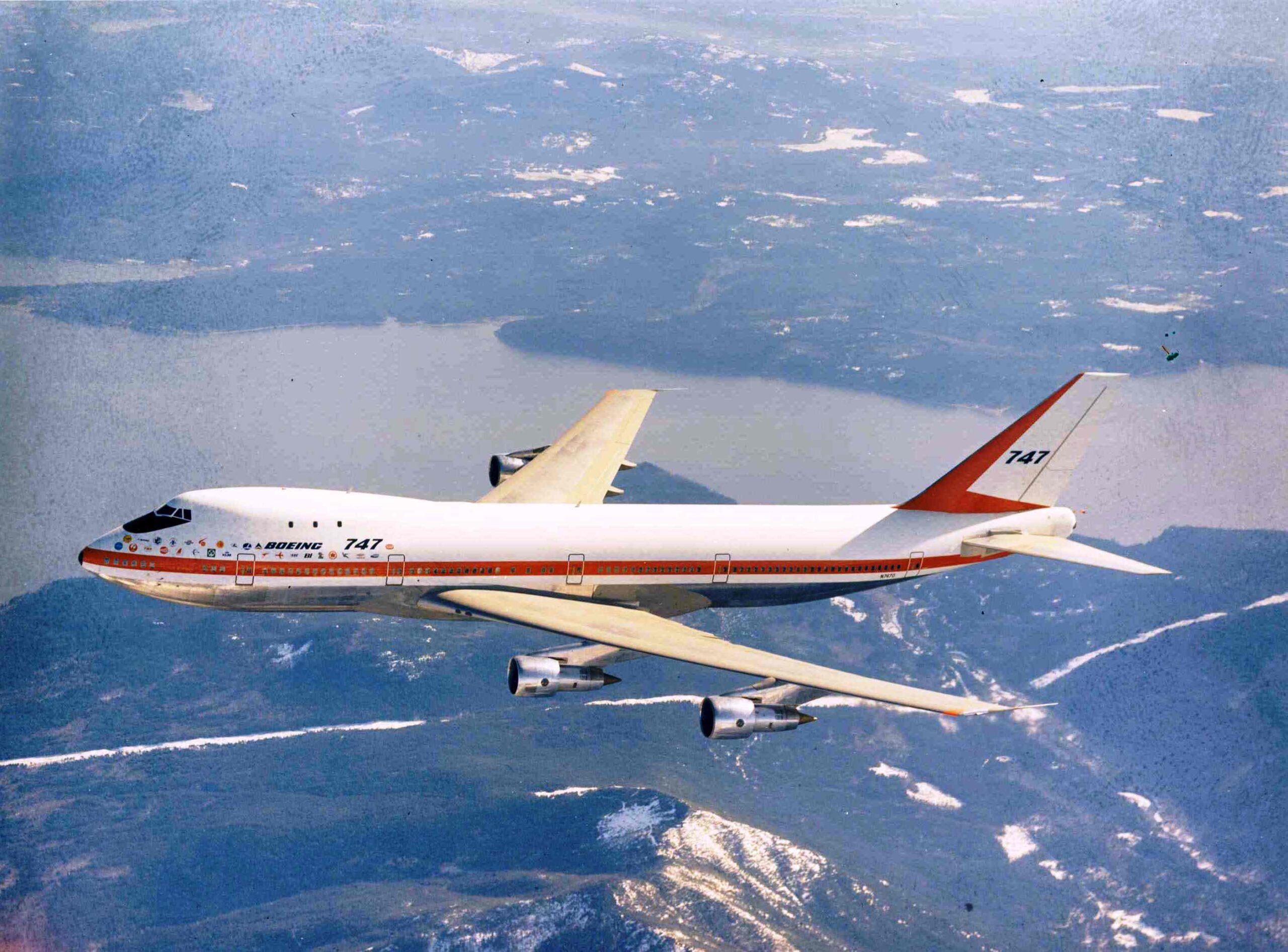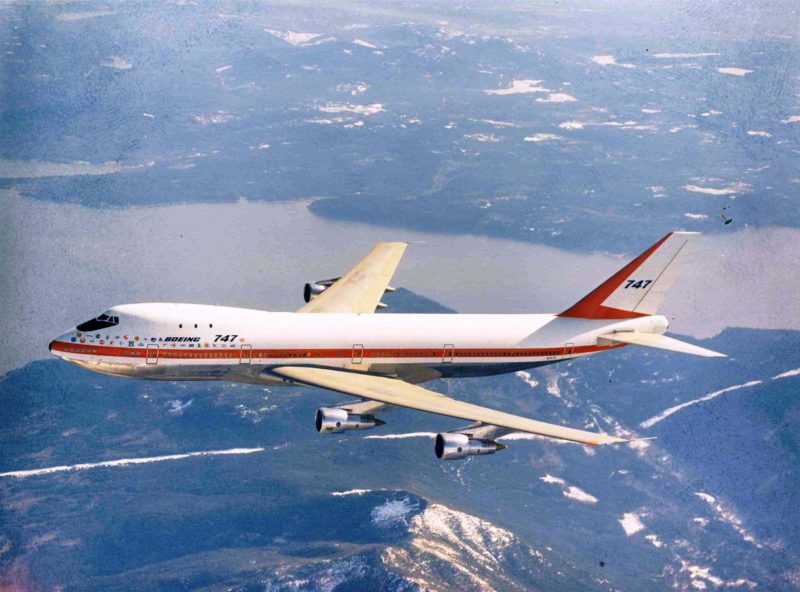
Today, February 9, 2019, is the fiftieth anniversary of the first flight of the Boeing 747, aptly nicknamed the Jumbo Jet (after an enormous nineteenth century Sudanese bush elephant in PT Barnum’s circus). Like Jumbo, the 747 was unique for its size, doubling the passenger count, cargo payload, maximum takeoff weight, and wingspan of the 707, Boeing’s first jetliner and the defining hardware of the Jet Age’s first decade, the 1960s.
With passenger numbers booming, Pan Am president Juan Trippe and Boeing president William Allen went on a now-legendary fishing trip to discuss a gigantic people mover.
“You build it, I’ll buy it,” promised Trippe. “You buy it, I’ll build it,” countered Allen.
The contract for 25 747s was signed by Boeing and Pan Am on July 15, 1966, at Boeing’s fiftieth anniversary party. Trippe predicted the 747 and the coming of global mass transit would be, “A great weapon for peace.” The technologies of a great people mover, and the intercontinental ballastic missile, were competing to define the future of humanity, he suggested.
The winner, thus far, has been the former, as air travel has brought far and foreign cultures to our TVs and playlists, our dining tables, and into our own experiences. (Today, more than eight million passenger journeys by air take place every day, including two million in the United States alone. Every day.)
Once the starting pistol was fired by Trippe and Allen, the catalyst for this transformational change to humanity, the Boeing 747, took shape with amazing speed, despite the phenomenal scale of the task. For one thing, a manufacturing facility big enough did not exist, so a new plant was built at Paine Field, Everett, in rural Washington state, 30 miles (50 kms) north of Seattle, the largest building by volume in the world (taking the crown from the Vertical Assembly Building at the Kennedy Space Centre where Saturn V rockets were stacked for trips to the Moon). The Boeing plant at Everett, which has since expanded to incorporate the 777 production line, is so huge, clouds occasionally form inside the factory and it rains. Indoors.
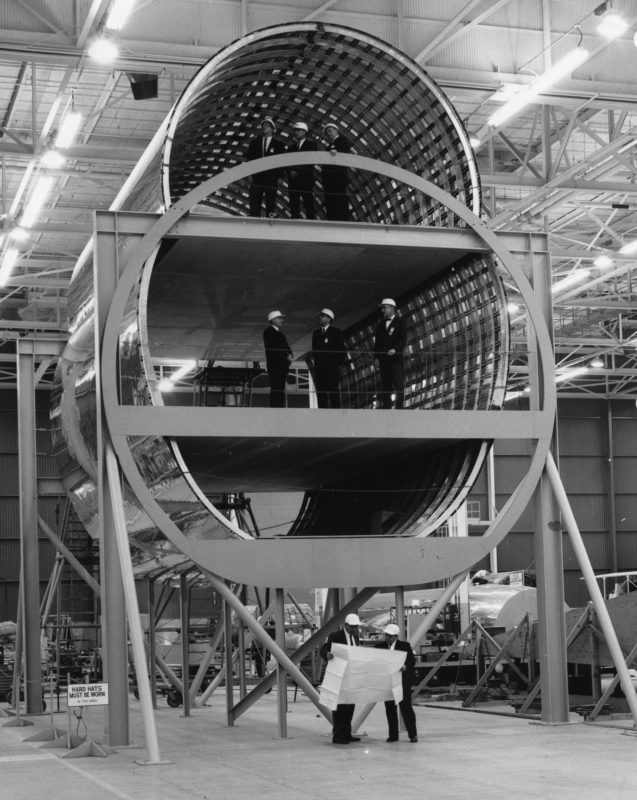
Meanwhile at Boeing’s engineering base, The Incredibles, as Boeing’s army of young draftsmen were known, worked round the clock to create Juan Trippe’s dream machine.
In the mid-1960s, it was widely assumed that the future of passenger air travel would be supersonic, and that the 747’s future would be as a pure freighter once the SSTs arrived, so the diameter of the fuselage was reached by putting two standard containers side by side and drawing a circle around it. The cockpit was moved out of the way to allow main-deck loading through the nose, creating the distinctive hump, or bubble, which was initially to be filled out with avionics and other technical equipment, but by the time of entry into service, had morphed into the defining style icon of the 1970s, the first class upper deck lounge symbolised by the spiral staircase.
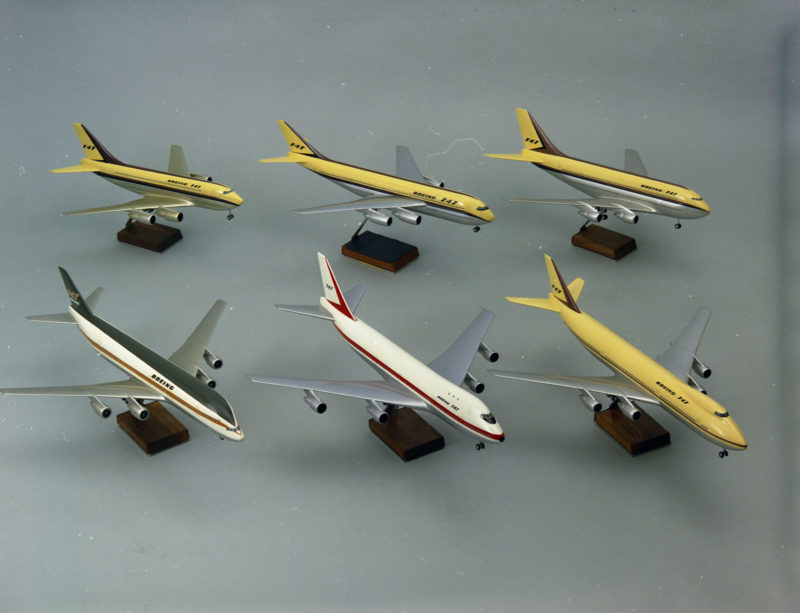
The prototype, registered N7470 and still extant to this day at the Museum of Flight in Seattle, was rolled out on September 30, 1968, only two years after the contract with Pan Am was signed.
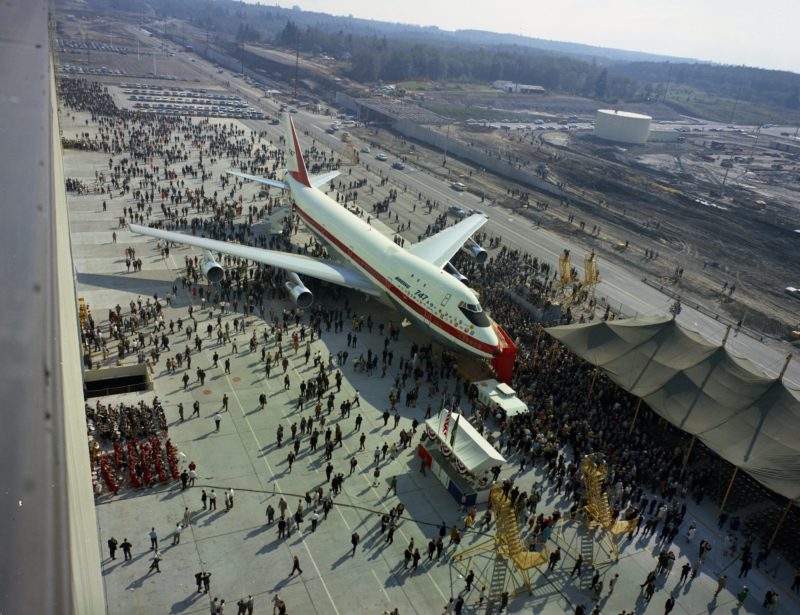
For the Incredibles to get the machine created and built on such a punishing timeline was an incredible achievement. Construction of the prototype had begun before the plant was complete, thus beginning without a roof or heating. At one point, the cost of the programme exceeding the net worth of the entire Boeing Airplane Co.
The world’s press, Boeing workers, and representatives from the 26 airlines that had by now ordered nearly 200 747 were all present, along with the Everett High School Band, who performed Elgar’s Pomp And Circumstance. Once N7470 had been tugged out of the hangar, flight attendants from the customer airlines were given spectacularly vague instructions about exactly when to crack their bottles of bubbly against the side of the aeroplane, resulting in a chaotic christening that was nonetheless joyful and good-natured, while a 707, a 727, and a 737 passed overhead, skirting just underneath the low cloud base.
Test pilot Jack Waddell was selected to command the maiden flight, and he in turn chose Brien Wygle to be first officer, with Jesse Wallick riding sideways at the system panel as flight engineer.
(Jesse Wallick came from an impressive aviation family, which included brother Lew Wallick who commanded the first flights of the B-47 bomber, the 720, 727, 737, 747SP, 757 and 767.)
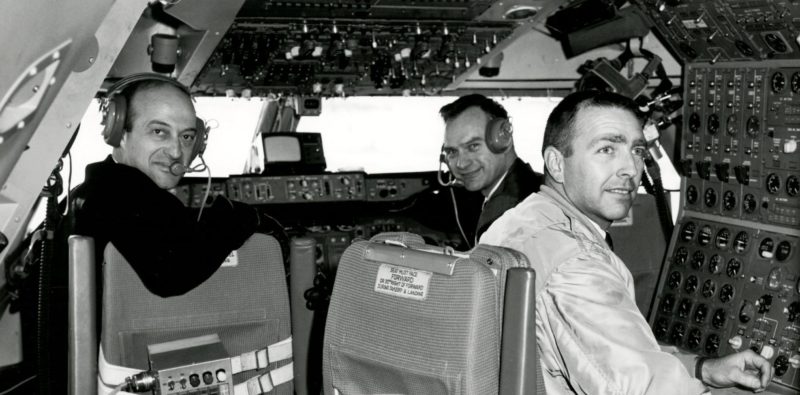
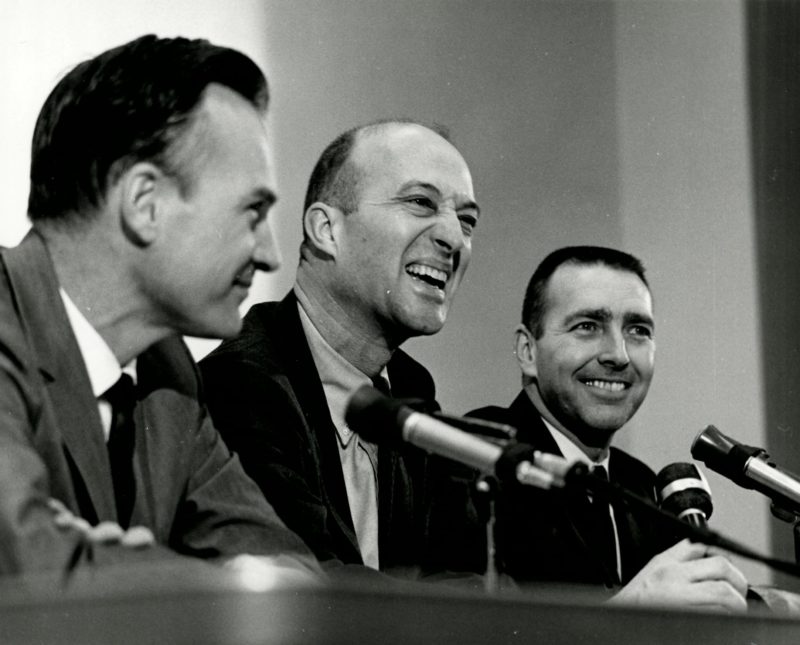
At high power settings it was known that the cowlings of the enormous Pratt & Whitney JT9D engines could suffer a very slight deformation from a perfect circle to a oval shape, just enough for the tips of the fan blades to rub against the fan casing, leading to overheating, power surges and explosive compessor stalls.
The engines were approved for flight, but Waddell was concerned that the engines could suffer compressor stalls as the ship pitched skyward on takeoff, and might all do so simultaneously.
This would rob the ship not only of thrust, but also hydraulic power needed to move the flight controls. Therefore, the prototype was fitted with electrical back-up power to ensure hydraulic systems remained pressurised and usable, even in the event of the failure of all four engines.
Another worry was landing the plane with the cockpit so far above the runway, so Boeing engineers fixed a mock up of the flight deck 29 feet (8.5 metres) high on a rig, and towed it around the airfield to familiarise Waddell and his men with the grandstand view.
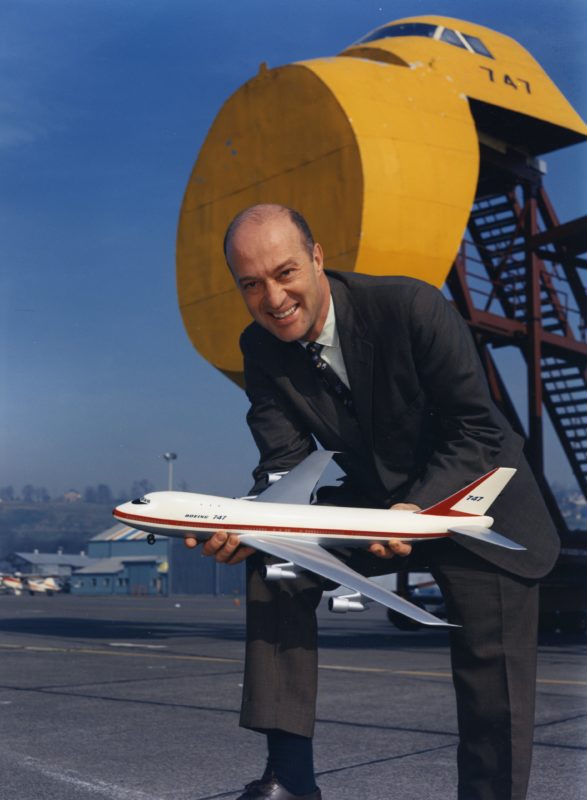
February 9, 1969. The day dawned grey and cloudy, but Waddell spoke by radio to the crew of a pre-delivery 707 airborne on a test flight in the local area and ascertained the weather was flyable. Test equipment was activated, the air force and coastguard were notified. Bill Allen, president of Boeing, walked out to the plane with the crew and told Waddell,
“Jack, I hope you understand that the future of the company rides with you this morning.”
The first engine was started at 11:09 and a few minutes later, Wygle called up for taxi. Boeing’s in-house chase plane, an F-86 Sabre fighter jet, was ordered into the air at Waddell’s command. At 11:35 N7470 was at the runway threshold. “Four stable engines!” called Wallick from the engineer’s station. The brakes were released and the 747 era began.
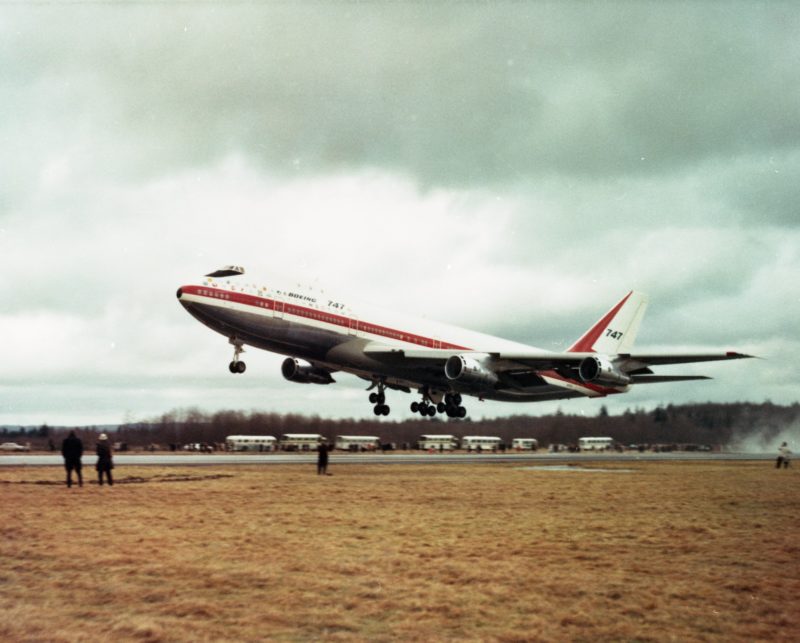
After rolling for just 4,500 feet (1,371 metres), the nosewheels were off the ground and a second later, the 747 lifted into the air and was climbing away. Waddell banked the big bird smoothly into a 270 degree left turn to pass overhead the field for the benefit of the assembled photographers, then climbed away to begin the process of getting to know Boeing’s new flagship.
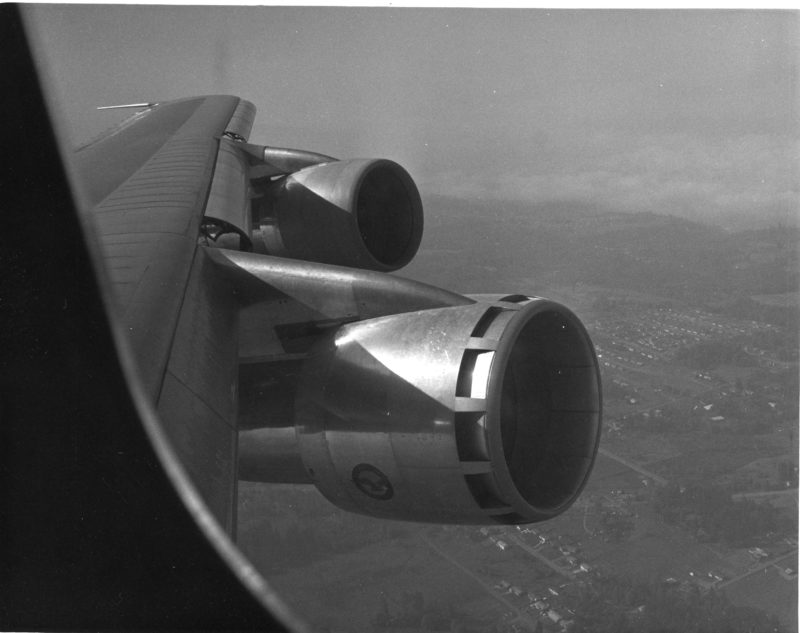
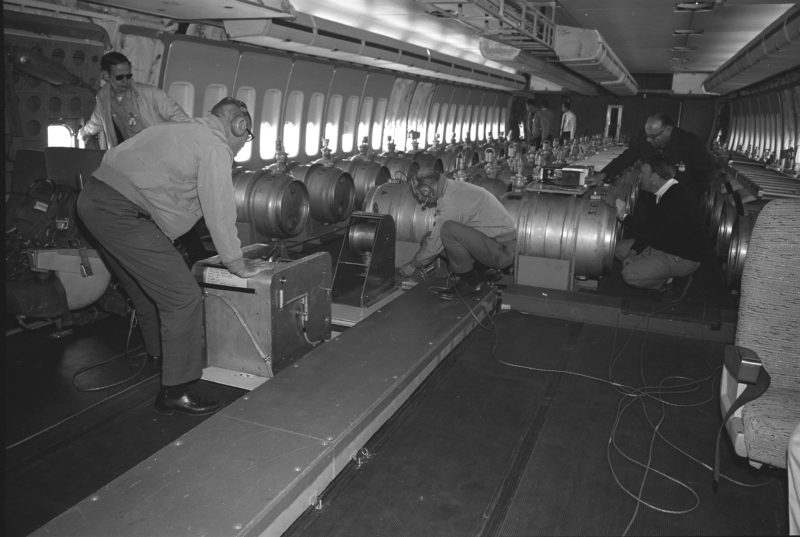
The crew tried flying with different hydraulic systems shut down and encountered no difficulty. Assymtric engine thrust settings were easily tuned-out using the flight controls, and kicking a rudder pedal to induce Dutch Roll, a diverging rocking motion named after a drunk sailor trying to walk during shore leave, had no effect. Dutch Roll is one of the biggest control stability problems for swept-wing jets, and one the 747 would prove remarkably unaffected by. The Incredibles had created a masterpiece.
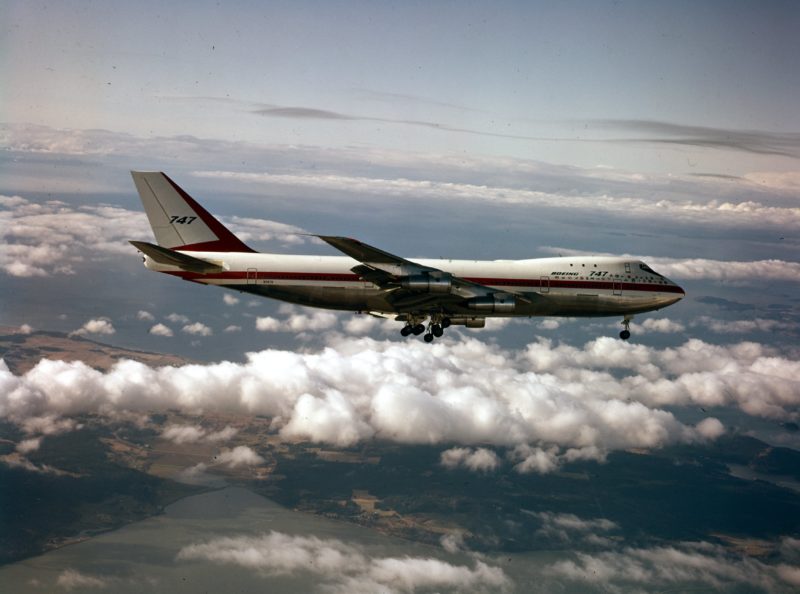
The flight was not without drama, however. When the flaps were extended from 25 to 30 degrees, the airframe shook with a thump, followed by vibration. The flap lever was moved back to 25 and flight engineer Wallick went back to take a look, returning to announce that a section of flaps on the right wing had come loose.
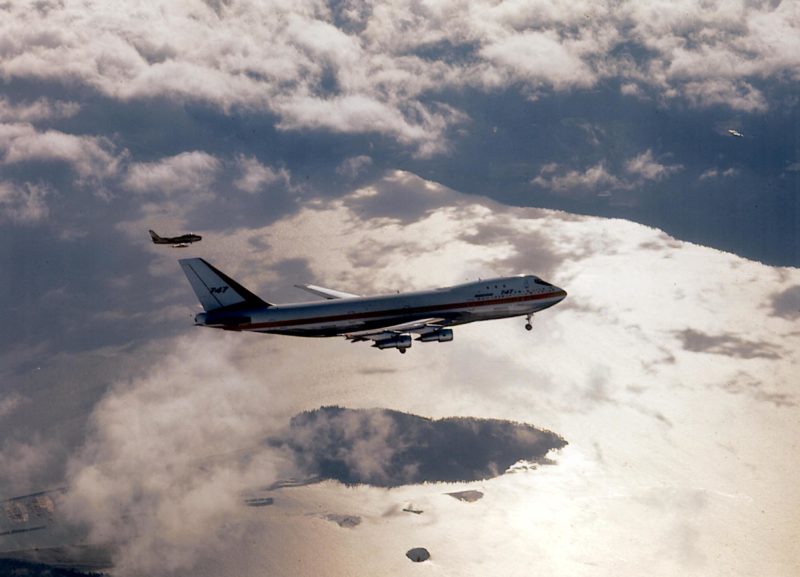
It was decided to end the test phase of the flight at that point but the flight continued to allow a planned midair rendezvous with the company 727, carrying Boeing top brass and members of the press. Some air-to-air photography and a first look at the 747’s great lines in flight took place over scenic Washington state, then N7470 was heading back to Everett. The landing was firm, with Waddell later commenting, “We contacted the ground sooner than I expected,” a lament of many future 747 first timers to come – the cockpit really is that high.
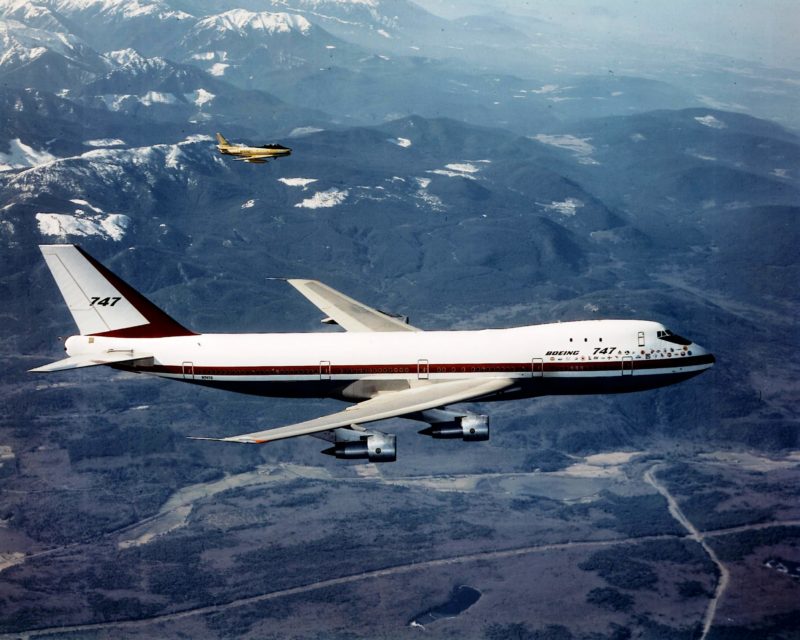
The 747’s first flight had lasted for an hour and 15 minutes. The sortie was a success in its own right, but more importantly, the world had changed forever, and the era of global mass transit had begun.

All images Boeing history archives
If you're interested to know more about the history and evolution of the Boeing 747, please read on the article below we posted during the 50 years celebration of 747 roll out.
50 years of the Boeing 747


